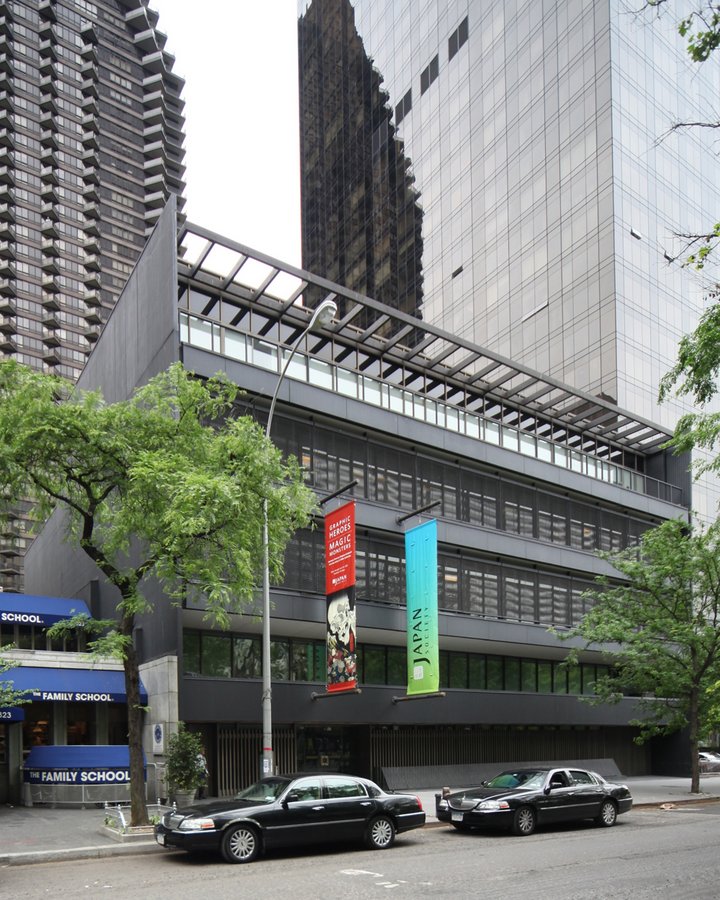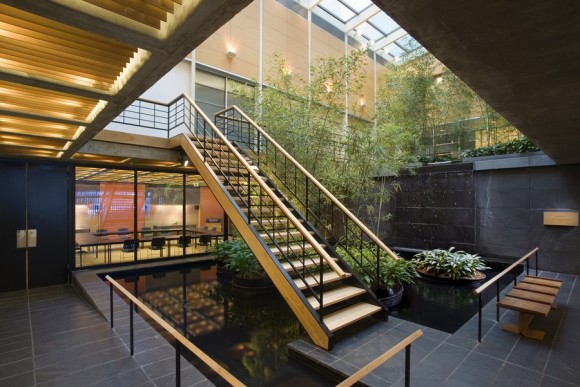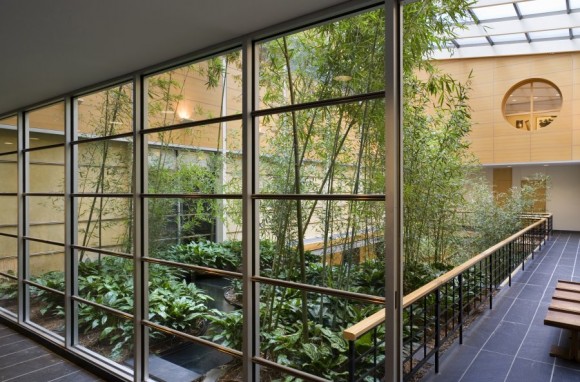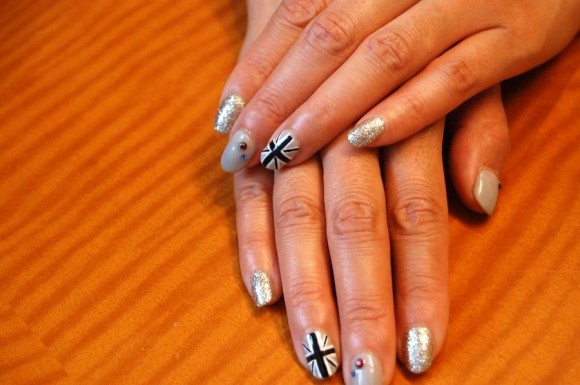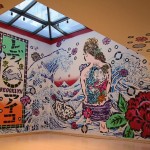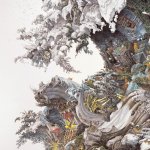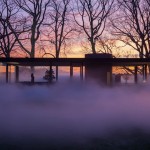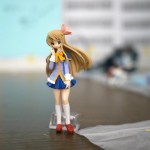We had the honor of interviewing Miwako Tezuka, the new gallery director of Japan Society (JS) and the first Japanese to take the position. In an exclusive Spoon & Tamago interview, we talk with her about her hopes and ambitions for JS, as well as the the art field in Japan and NY. What emerges is an energetic figure who is not afraid of the challenge the new appointment brings her.
The new Japan Society Gallery
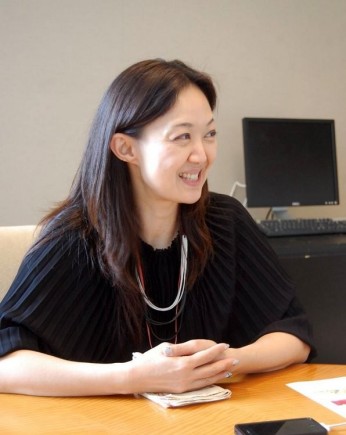 Q. How do you plan to steer the direction of the gallery?
Q. How do you plan to steer the direction of the gallery?
A. One thing I really want to do at JS is to unpack Japan. JS has been around for over a century now and their mission has always been to create a platform for people outside Japan to understand Japan, and I think that introductory period has been done. Even when I was working at Asia Society (AS), I realized that a lot of people think they know Japan and Japanese culture through the cultural stereotype. The time is right for us to forge forward, to bring in more multicultural aspects of Japan; things people would see and say “I didn’t know that existed in Japan”. I want to bring surprises to people. I think that’s very important. I would like to take the institution to the next step by creating more dynamic programs that feature aspects of Japan that people might not know. There are many hard-to-get-to areas in Japanese art so I want to bring those out.
I would love to organize exhibitions that talks about the multicultural aspects of Japan. Japan’s relationship with other parts of Asia, and all over the world. Another approach I want to experiment with is to look at Japan and find other cultures within Japan.
Are there any future plans you can share with us?
The first exhibition I will be overseeing is next spring 2013 – a show called “Edo Pop: The Graphic Impact of Japanese Prints,” originally organized by the Minneapolis Institute of Art. The curator, Matthew Welch, organized the show by selecting Edo prints and incorporated works by contemporary artists who drew inspiration from the graphic sensibilities of ukiyo-e, merging a dialogue between traditional art and contemporary art. For JS, we will add Japanese artists based in NY as well as artists from different cultures. Showing artists who are not Japanese in JS means we are going to see more diversified views of Japan – introducing Japan as something we don’t know. NY is a melting pot so that just makes sense.
Contemporary vs. Traditional
I think it is a good approach for the gallery to carefully select traditional objects and have contemporary artists commune with them and create new works, to engage the audience who is more knowledgeable about traditional art. When you consider the development of Japanese art, it’s not such a new idea because there’s always this echoing effect. For instance, we’re opening a Sakai Hoitsu show this fall and Rimpa is all about looking back at courtly culture of Heian. The Edo artists who were so interested in that culture, studied classical literature and poetry and tried to bring subjects from that period to their works. They were the avant garde of that time. It’s the same tradition of finding inspiration and creating connections transgressing time, which is the concept of tradition.
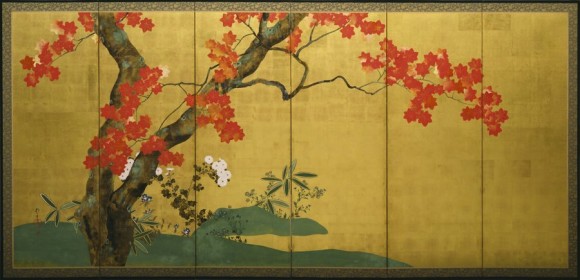
Sakai Hōitsu (1761 – 1828), “Maples and Cherry Trees”, after 1817. Pair of six-panel folding screens; ink, colors, and gold leaf on paper, each screen 65 × 134 ½ in. (175.3 × 341.6 cm). Lent by the John and Celeste Fleming Family, courtesy of the Denver Art Museum | click to enlarge
I also want to look back at the history of JS. I believe there are various approaches we can explore, for instance I think it would be interesting if we researched the past 30 years or so of exhibitions and select highlights, inviting scholars to see how interpretations have changed. This will tell the story of the evolution of JS, as well as the Japanese art field. That will make people feel familiar with JS and also make us notice what we did and also what we still need to do – kind of a self-analysis. Exposing yourself to criticism is the only way to move forward. For that purpose, I plan to be a troublemaker. But in the end, I believe in the love and dedication, as well as the generosity, that our patrons have for JS and Japanese culture that will allow us to do innovative exhibitions.
Will the architecture of JS play a meaningful role in your work?
The JS building is the youngest landmark in New York City, and the city’s first permanent example of Japanese architecture, built in the early 1970s by Junzo Yoshimura. It’s a beautiful architectural creation that echoes simple Japanese aesthetics. I want to use that building almost as a forest or a tea garden, where the minute you step in you discover something. It can be ambitious but since we have a very strong performance art and film section, I want to collaborate with them to create something that engages all senses. Engaging not only visual artists but also architects, designers, and performance art as well.
Do you plan on interacting at all with the Japanese art scene in Japan?
We want to poke Japan from the outside to instigate something; make something happen within Japan as well as outside. I want to bring artists who have never shown out of Japan before. I want to pull them out of that cage and wake them up and give them the opportunity. They need an obachan like me to bang on their door and be like “come out and eat dinner with us!!” If we can give just 2 weeks of the outside world to the artists who have never been abroad, even that can change their perspective and the way they make art. Not everybody is depressed there. There are artists who are dying to come out but just don’t know how – artists who just needs a nudge in the right direction. Japanese artists who are already here, they are the strong ones I think. They already made a statement by being here and continue to work. For the Edo Pop exhibition, I want to show artists who are here and also artists in Japan to analyze the difference, put them into conversations and let them figure it out.
On moving from Asia Society to Japan Society
When at Asia Society (AS) I worked on “all of Asia” and most projects focused on one particular culture at a time. At AS I was looking at Japan within Asia, but at JS I will be looking at other Asian elements within Japan or looking at other places from Japan, and it gives me great pleasure to work specifically on Japan and finding new aspects in it. JS needs to find its niche and make a strong statement. Because of the financial difficulty these days, a lot of institutions are trying safe programs, but a small institution with no collection like JS can become a kind of Kunsthalle. I learned that through Dr. Melissa Chiu, who basically mentored me and taught me how to line up exhibition programs that provide an institutional presence in the globalizing world. She was always thinking about what makes AS special compared to other institutions: how to see it in that larger context.
Jikken Kobo – love of collaboration
Can you tell us a little bit about your specialization and your background?
I come from an art history background. I specialized in 1950’s Japanese avant-garde art and wrote my dissertation on Jikken Kobo (“Experimental Workshop”) who were active in the 1950’s in Tokyo. I chose that theme because I was always interested in collaboration. Jikken Kobo did that with visual artists, theater people, photographers, noh actors, modern dancers etc. This group was a very young creative force at the time, and they inspired me so much that I want JS to become a Jikken Kobo. I want JS to be a modern day experimental workshop where creators can get together and generate something new. Collaboration can occur in physical space with other institutions or it can be virtual. We can post a video of a contemporary artist conducting a gallery walk through traditional art exhibitions, showing the perspective of a creator instead of just a curator or director.
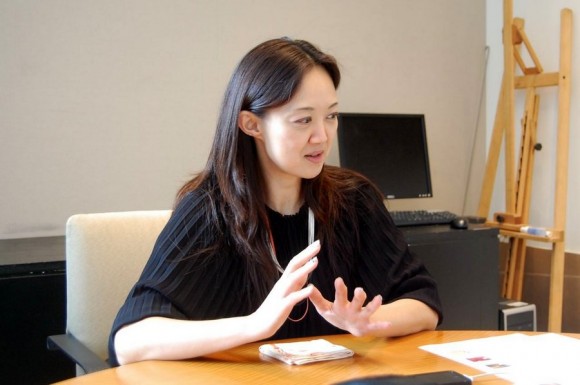
The ever evolving Contemporary Art scene
You’ve been in the States pretty long. How has the contemporary Asian/Japanese art scene changed?
I have been in NY for 23 years, but there was no “Contemporary Asian Art” scene back then. A handful of dedicated scholars like Drs. Reiko Tomii and Alexandra Munroe started to build the field and open this door to a new world, and I was encouraged by their trailblazing work. Now, Japanese contemporary art is in a unique place. Japan has produced the first contemporary artists with international fame. People like Yayoi Kusama, Hiroshi Sugimoto and Takashi Murakami etc.: they are already here. And especially this year and next year more Japanese artists have the chance to make themselves known to the world through major museum exhibitions planned. Kusama has her retrospective at the Whitney, a Gutai show will open in Guggenheim and MoMA will showcase art from “Tokyo 1955-1970” etc. So it’s a good time for contemporary Japanese artists to come in. This kind of flow is very important because it creates a movement, the audience gets familiar with one movement after another and the knowledge base starts to build up.
Can you tell us your thoughts about the New York Contemporary art scene in general?
The NY contemporary art world needs to shift towards more experimental projects. Instead of showing established artists, they need to open up their mind and create a new approach and perhaps broaden the market base. I felt this way because I just went to Documenta and also to galleries in Berlin, where the types of works they show are different from those in NY. The works are more conceptual, they require the audience to be engaged more intellectually. The galleries will not expect you to understand, but they will show it anyways and ask the viewer to interpret it the way they can. NY galleries recently have been showing works that are easier to understand, easy for your eyes. So art has become easy entertainment and a commodity rather than an intellectual challenge. The NY art scene needs to be more conceptually challenging.
You’re nails are fantastic. What’s going on here?
I had them done because of my upcoming trip to London, where Ei Arakawa invited me to take part in his performance art at the opening series for The Tanks at Tate Modern with Nishizawa Harumi from the Kamakura Modern Art Museum. All we know is that it starts with a lecture on Jikken Kobo but then moves on, requiring us to react spontaneously to Arakawa’s world.
This is one of the first public appearances as JS gallery director, perfect in the sense that it shows how she is a courageous missionary of art. Thanks for talking to us Miwakosan and best of luck in your new role!

